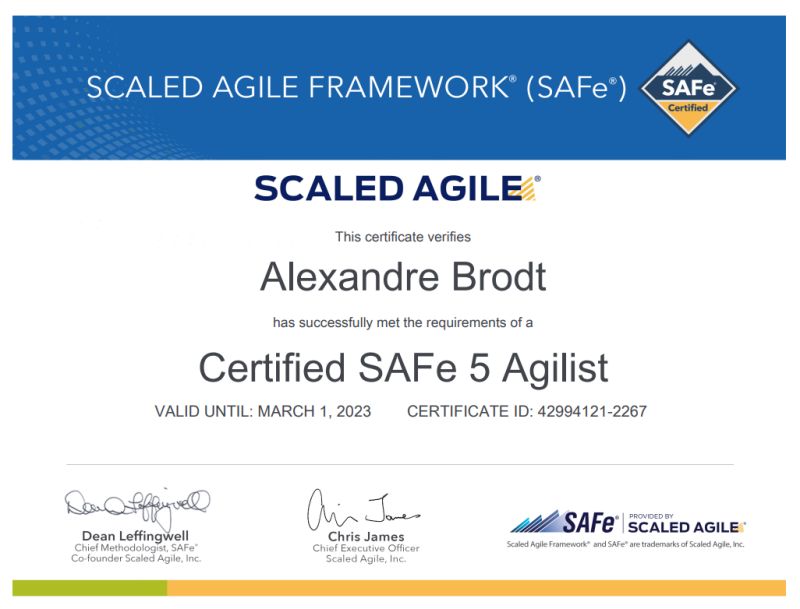SAFe Agilist (SA) certification: my experience and how I prepared
- 1 de março de 2022

Carnival well enjoyed around here. Days dedicated to family and, still, time for studies in the Scale Agile block, closing with another certification: SAFe Agilist (SA). My thanks to Renato Scaglia Pacheco Almeida for SAFe teachings and valuable experience exchanges.

When I decided to get the certification, I already saw SAFe as a “system” for large initiatives, a way to connect strategy and execution without losing cadence. What made the most difference was facing the framework for what it really is: Lean-Agile principles and systems thinking applied at scale. Instead of memorizing artifacts, I tried to understand how flow improves when we limit WIP, reduce batch sizes and create predictability.
I treated the preparation as a mini project. I defined a target date, studied a little each day and used the Big Picture intentionally, navigating through levels: from team to ART, from larger solutions to portfolio. To fix it, I created mind maps with principles, flow, WSJF, portfolio and metrics. In the end, I practiced questions, but always going back to the why of answers, flow economics, decision decentralization when it makes sense, and focus on value delivered now, not local optimizations that worsen the whole.
The themes that repeated the most were those that sustain daily execution: SAFe principles and values, cadence and synchronization in ARTs, System Demo and Inspect & Adapt, Lean Portfolio Management with epics, guardrails and WSJF prioritization, plus continuous delivery pipeline with DevOps practices. Basically, the exam tests context, less “what definition” and more “what would you do to improve flow and reduce risk in this scenario”.
If I had two or three weeks to recommend a path, I’d start with principles, Lean House and an overview of the Big Picture, advance to PI Planning and ART events, and close with LPM and situational exercises. You don’t need to become an expert in all layers, understanding relationships is already enough. At exam time, follow a simple line of thought: prefer alignment to heroism, maintain stable rhythm, decentralize with criteria and decide based on data. Results matter more than beautiful outputs in slides.
The material that helped me most was the official Leading SAFe content, the Big Picture itself with its reference articles and my mind maps for quick review. The rest is practice and conversation with those who live this daily.
If this is your next step, good journey. If I can help in any way, call me.